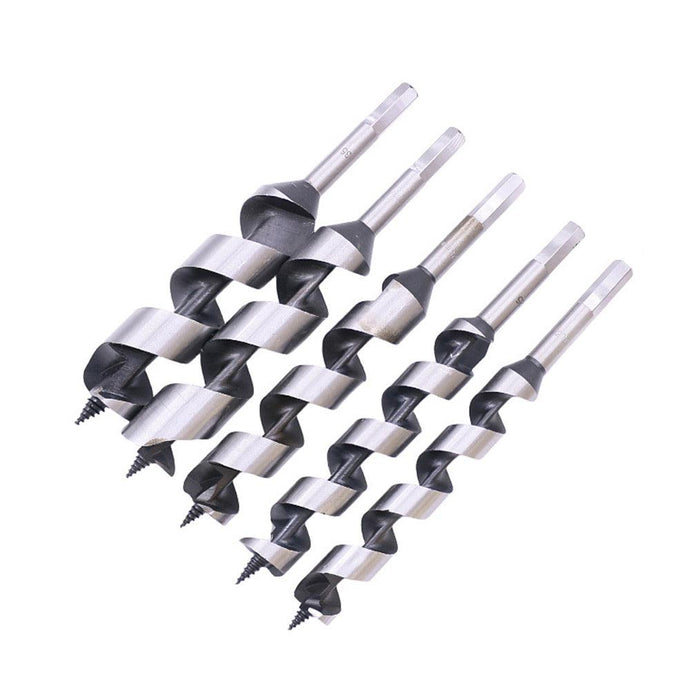


When it comes to drilling deep, clean holes, the auger bit is a specialized tool that excels in situations where other bits might struggle. Whether you're working in construction, woodworking, or even outdoor projects like fencing and gardening, knowing when to use an auger bit can make a significant difference in the efficiency and quality of your work.
One of the primary reasons to reach for an auger bit is its ability to bore deep, clean holes in wood. Unlike other drill bits that rely on speed and friction to cut through material, the auger bit has a unique design tailored for depth and precision. Its spiral shape features a sharp cutting edge along the edges, coupled with a screw-like point at the tip, which guides the bit into the material. This design allows the bit to steadily pull itself deeper into the wood as it drills, making it ideal for tasks that require deeper holes, such as constructing thick beams, posts, or even timber frames.
Another scenario where the auger bit shines is in projects that involve hardwoods or dense materials. The spiral design of the bit, combined with its sharp cutting edges, enables it to clear wood chips and debris efficiently as it drills. This is crucial when working with hard or thick wood, where lesser bits might clog or overheat. The auger bit's ability to remove waste material while cutting ensures that the drilling process remains smooth, preventing the bit from jamming or stalling. For professionals and DIYers working with hardwoods like oak, maple, or walnut, the auger bit provides the power and durability necessary to achieve clean, accurate holes without excessive force.
Auger bits are also the go-to choice when drilling requires accuracy in both direction and depth. The tip of the auger bit, often referred to as the feed screw, helps maintain alignment as the bit drills deeper. This self-feeding action means that the bit follows a precise path, making it easier to keep the hole straight and centered. This is particularly important for applications like installing wooden dowels or structural bolts, where misalignment could compromise the strength of the joint or overall project.
In addition to woodworking, auger bits are widely used in outdoor and construction projects where depth is crucial. For instance, when installing fences, pergolas, or decking, auger bits can be used to drill holes for long screws or bolts in the posts. In gardening and landscaping, auger bits are sometimes adapted to drill planting holes for bulbs or small trees, especially in compacted or clay-rich soil. In these cases, the auger bit's ability to remove material as it drills ensures that the hole remains clear and ready for whatever needs to be installed.
However, one of the lesser-known advantages of using an auger bit is its efficiency when working with hand drills or low-power drills. Unlike high-speed drill bits that rely on RPMs to cut through material, auger bits perform exceptionally well even at slower speeds. This makes them ideal for use with manual tools or battery-powered drills that might not have the same torque as their corded counterparts. The self-feeding design of the auger bit reduces the amount of force needed to drill, allowing the user to maintain control while achieving deep, clean cuts.
While auger bits offer a range of benefits, there are a few situations where they might not be the best option. For projects that require shallow, wide holes or holes in thin material, a spade bit or Forstner bit might be more appropriate. Additionally, because auger bits are designed for deep, straight holes, they may not be the right choice for drilling angled or overlapping holes.
Ultimately, the auger bit is a powerful and versatile tool, but its true strength lies in its ability to drill deep, accurate, and clean holes in wood and other dense materials. Whether you're building a timber frame, installing fence posts, or working with hardwood, the auger bit's specialized design ensures that your work is done with precision and efficiency. By understanding the specific advantages of this tool, you can make better decisions about when to use it, allowing you to tackle a variety of projects with confidence and skill.